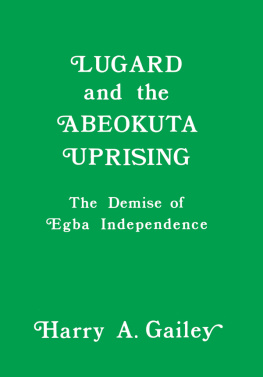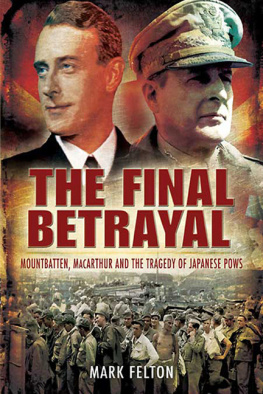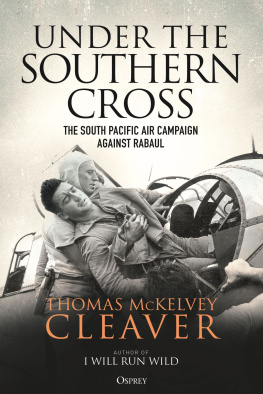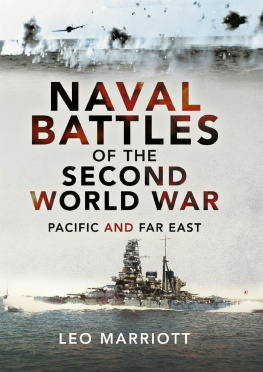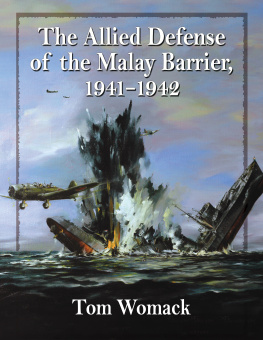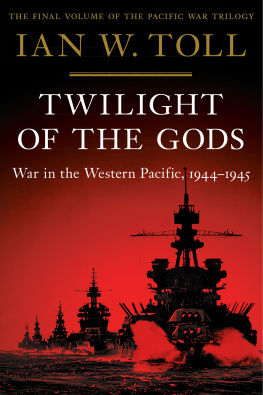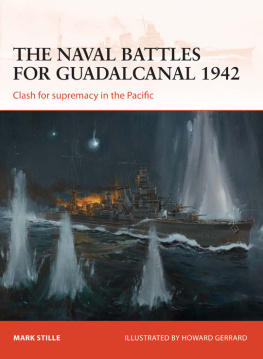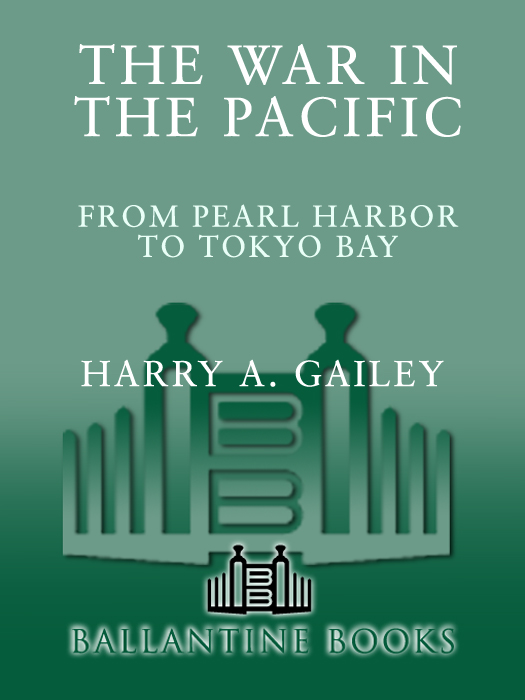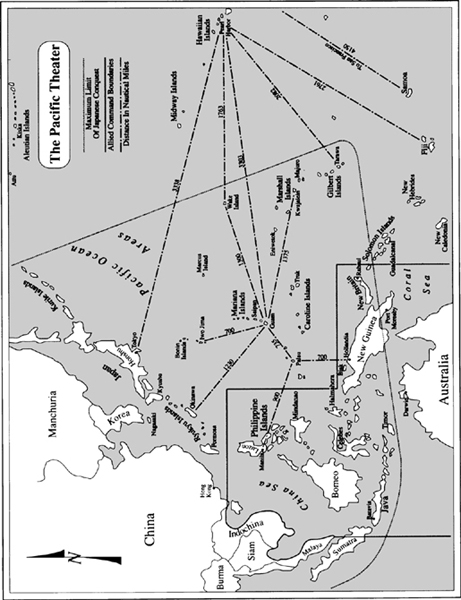
Copyright 1995 by Harry A. Gailey
Published by Presidio Press
505 B San Marin Drive, Suite 300
Novato, CA 94945-1340
All rights reserved. No part of this book may be reproduced or utilized in any form or by any means, electronic or mechanical, including photocopying, recording, or by any information storage and retrieval systems, without permission in writing from the publisher. Inquiries should be addressed to Presidio Press, 505 B San Marin Drive, Suite 300, Novato, CA 94945-1340.
Library of Congress Cataloging-in-Publication Data
Gailey, Harry A.
The war in the Pacific : from Pearl Harbor to Tokyo Bay / by Harry A. Gailey.
p. cm.
eISBN: 978-0-307-80204-0
1. World War, 19391945CampaignsPacific Area. I. Title.
D767.G28 1995
940.5426dc20 94-32493
All photos courtesy the National Archives.
v3.1
To my Wife,
former Yeoman Rosalie Joy Bray (W-USNR),
in deep appreciation for over
four decades of continuous support
Contents
Maps
Preface
The Second World War engaged the energies of the American people for almost four years and was fought on a scale barely conceived of by even the most pessimistic prewar observers. Of the many theaters of operations, the Pacific held a unique place in the public mind, for the Japanese personified what most Americans considered to be evil. Japan, by attacking Pearl Harbor, forced the United States reluctantly to become a partner in a global conflict that was already two years old. Thus, despite the U.S. governments Eurocentric military policy, many Americans viewed the Japanese as the primary enemy. Although racism may have played a role in this, remembrances of the atrocities committed by Japanese soldiers in China, the Pearl Harbor attack, and the brutal treatment of American prisoners at the hands of their Japanese captors as exemplified by the Bataan Death March probably did more to shape U.S. public opinion.
Military historiography since the war reflects the prewar bias of U.S. policy by focusing on events in Europe. This is not to imply that the Pacific war has been completely overlooked. There is a series of excellent official and unofficial histories of specific campaigns, and biographies of the most important military commanders and reminiscences by participants abound. However, many deadly campaigns once thought to have been critical have been all but ignored. The most important of these neglected areas are the central and northern Solomons actions, the murderous Peleliu engagement, Australian and American campaigns along the thousand-mile New Guinea coast, and the Philippines conquestthe largest American operation of the entire Pacific conflict. Recently, a few monographs have dealt with these areas. However, there remains no general history of the Pacific war focusing solely on that theater. The few general works available attempt to cover the vast China-Burma-India theater in conjunction with the Pacific campaigns. In every case this has meant that neither area has received the attention it deserves.
That observation was the genesis of this work. I believe that the first task of any general history of World War II is to trace the background of the war in considerable detail since political, military, and socioeconomic forces were so important in determining the decisions for war. In this work, the reader will find a thorough presentation not only of the immediate diplomatic maneuverings but an overview of the history of Japanese-American relations. Also included is an analysis of the American and Japanese military systems, permitting the reader to evaluate the immediate and long-term capabilities of the antagonists.
By eliminating a discussion of the Asian land war and its complex geopolitical problems, I was able to give greater attention to many areas of the conflict that had previously been ignored or given only brief mention. Similarly, I have tried to present the activities of the various services and nationalities involved in both the Central and Southwest Pacific areas in a logical, coordinated manner. This was no small task as the overall conduct of the war was extremely complicated. Each campaign was composed of myriad planned and fortuitous actions. It was therefore necessary for me to relate the events of most campaigns in some detail. My hope is that these narratives will enhance the clarity of the overall picture being presented and that both military history specialists and general readers will better be able to appreciate the interrelated parts of the Pacific war that contributed to the Allies ultimate victory.
The narratives and interpretations of the various phases of the war contained herein are based on the considerable research done for my earlier monographs on operations in the Central and Southwest Pacific theaters, as well as recently declassified materials. The most important recent secondary studies also provided valuable information on specific campaigns. A detailed listing of the sources used can be found in the bibliography.
Chapter 1
Roots of Conflict
THE ATTACK ON Pearl Harbor on 7 December 1941 was the climax of nearly a half century of rivalry between Japan and the United States in the Far East. This competition, not always clearly recognized by the U.S. government, nevertheless existed even in the most quiescent periods and was clearly understood by a succession of Japanese civilian and military leaders, particularly after World War I. This differential attitude toward domination of the vast land areas of Asia was one factor that predetermined the first years of the conflict during World War II. Americas isolationism, general ignorance of the situation in the Far East, arrogance, andin the late 1930sconcern with developments in Europe all contributed to its woeful lack of preparation to meet the well-planned and executed simultaneous attacks against preselected targets by the Japanese military.
Japanese and American planners in the first part of the twentieth century viewed the Pacific region as an adjunct to the main area of concern. It was obvious to Japanese military planners that at some future date the United States might interfere militarily and endanger Japanese goals on the Asian mainland. In such an eventuality it would be necessary for the Japanese navy to intercept and destroy any American Pacific fleet units near Japanese home waters. American plans regarding the Pacific were never as clear. Most of the United Statess Far Eastern and Pacific military and diplomatic activities could be called mere posturing. The earliest example of this was the dispatch of the Great White Fleet on its around the world cruise in 1907, a blatant announcement that the United States had become a major power. Certainly one of President Theodore Roosevelts goals was to overawe Japan, the new Asian military power. Although not as obvious, much of the American governments activity in the Pacific in the following years was confused, and the amorphous goals enunciated from time to time were not backed by a military presence that could assure their realization if opposed by another major power.


